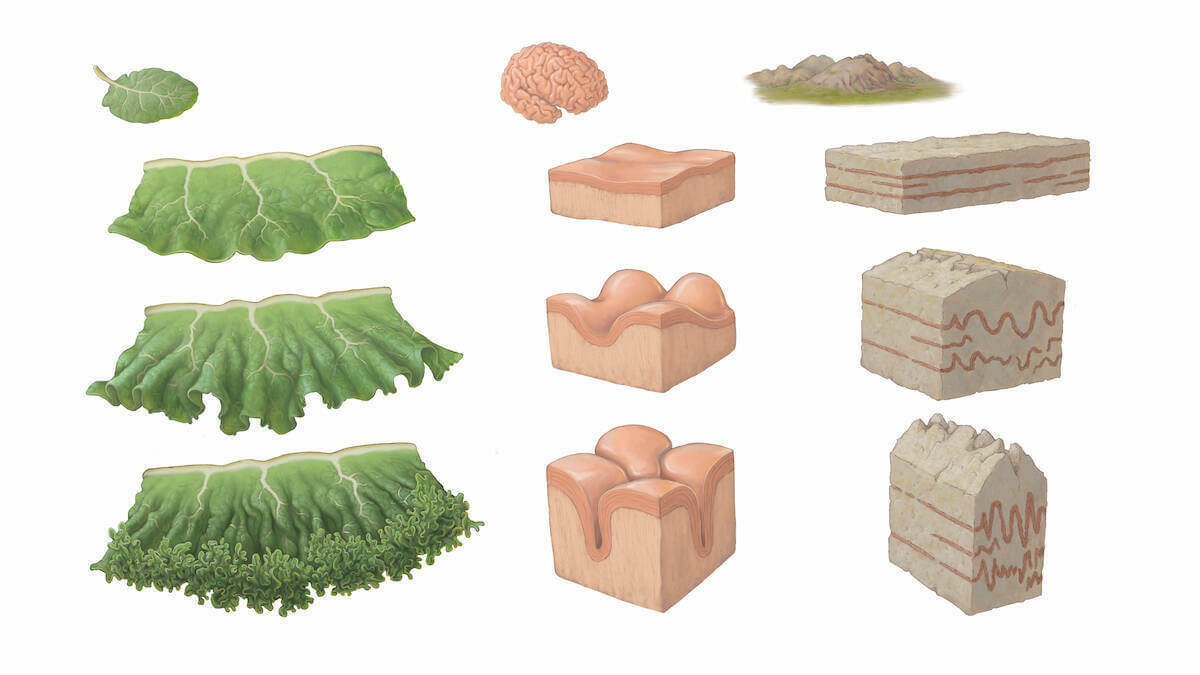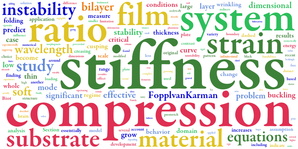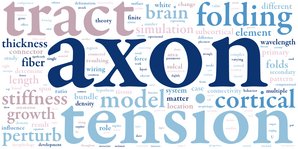Instabilities in soft layered materials

The brain consists of two tissues, called white and gray matter; in addition to distinct cell composition and neurological function, these two tissues also have different material properties. In bi- or multilayered systems such as this, how do the materials interact in instabilities?
We have studied bilayered materials extensively, finding that different loading conditions explain differences in instability observed in experiments (Holland et al. 2017), and that even low surface pressure decreases the stability of a system (Darayi & Holland 2020). We have also investigated multilayered materials, to understand the impact of layer spacing and properties on the resulting buckling patterns (Colin & Holland 2019; Colin et al. 2019).

Holland MA, Li B, Feng XQ, Kuhl E (2017) "Instabilities of soft films on compliant substrates." Journal of the Mechanics and Physics of Solids

Colin J & Holland MA (2019) “Layer wrinkling in an inhomogeneous matrix.” International Journal of Solids and Structures

Colin J, Darayi M, Holland MA (2019) "Stiffness contrast and separation influence wrinkling of adjacent layers in a homogeneous matrix." Journal of Applied Mechanics

Darayi M, Holland MA (2020) "Surface pressure reduces stability in bilayered systems under compression." International Journal of Non-Linear Mechanics

Jafarabadi F, Wang S, Holland MA (2023) "A numerical study on the influence of cerebrospinal fluid pressure on brain folding." Journal of Applied Mechanics

Wang X, Wang S, Holland MA (2024). "Axonal tension contributes to consistent fold placement." Soft Matter
This work is supported by an NSF CAREER award (Unfolding the Cortex: Biomechanics-informed Analysis of Cortical Thickness).
